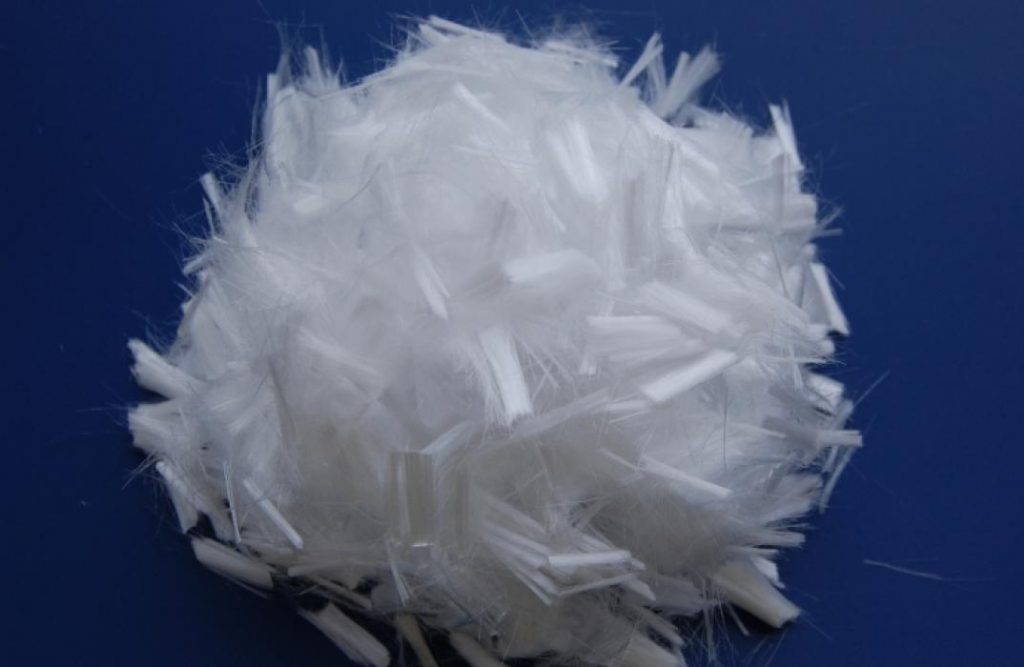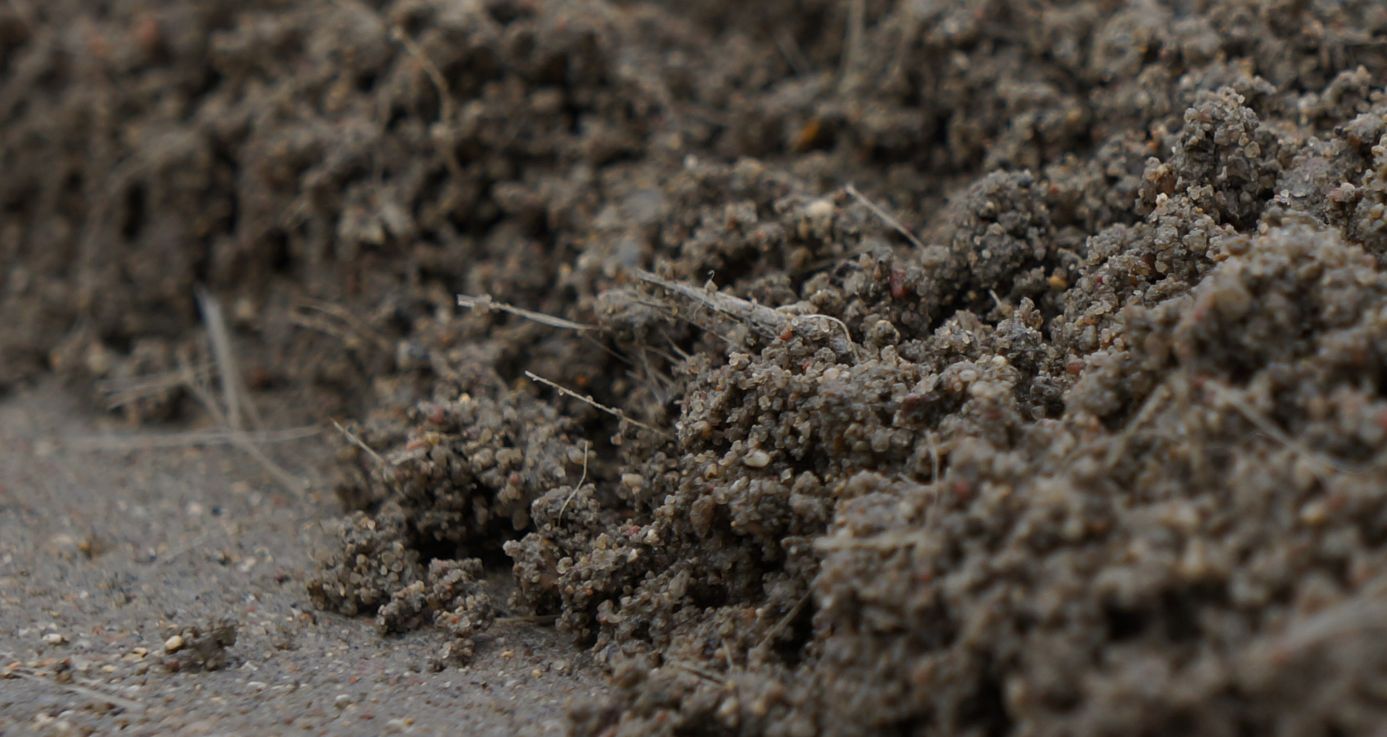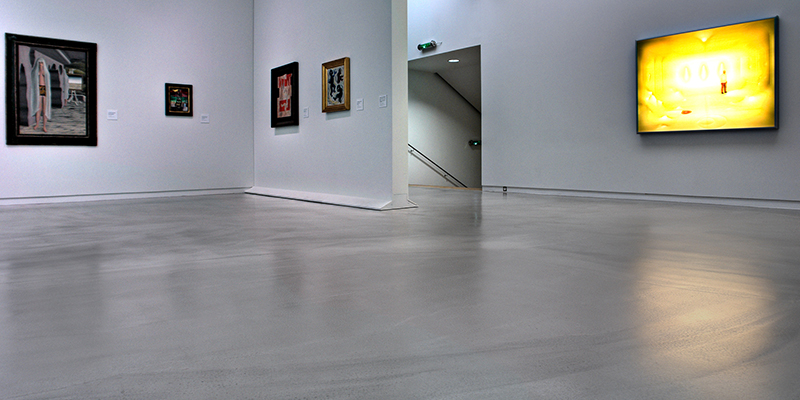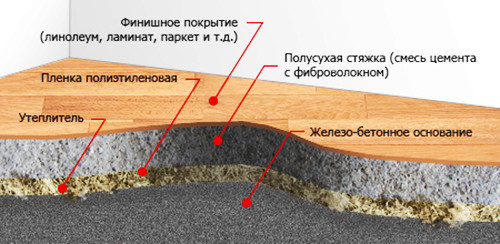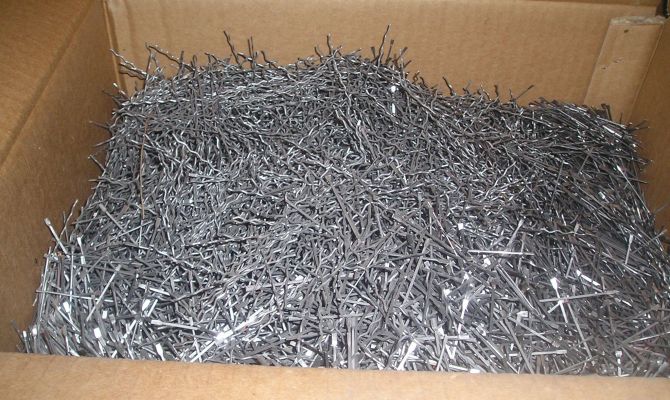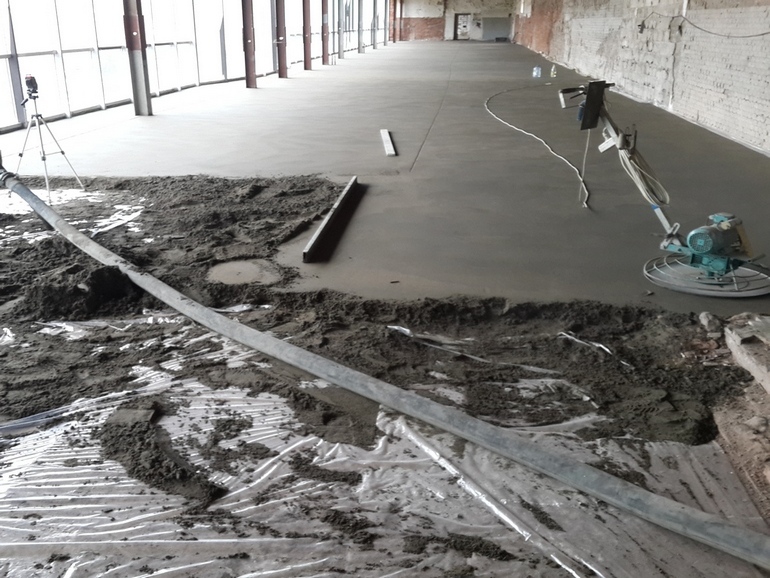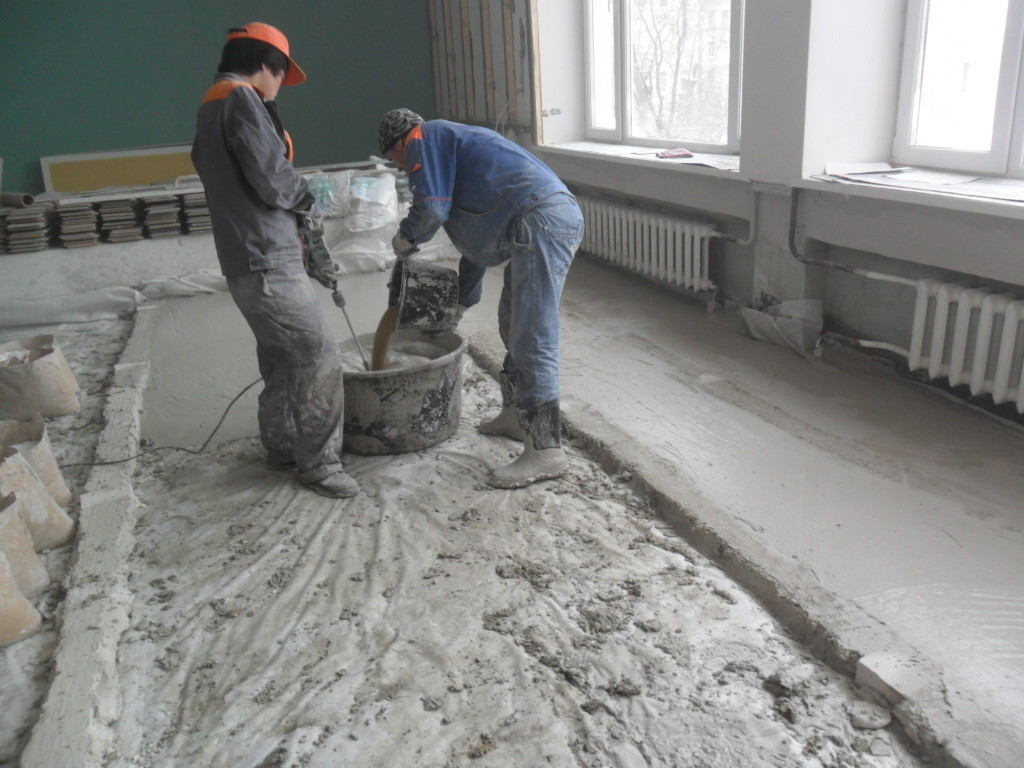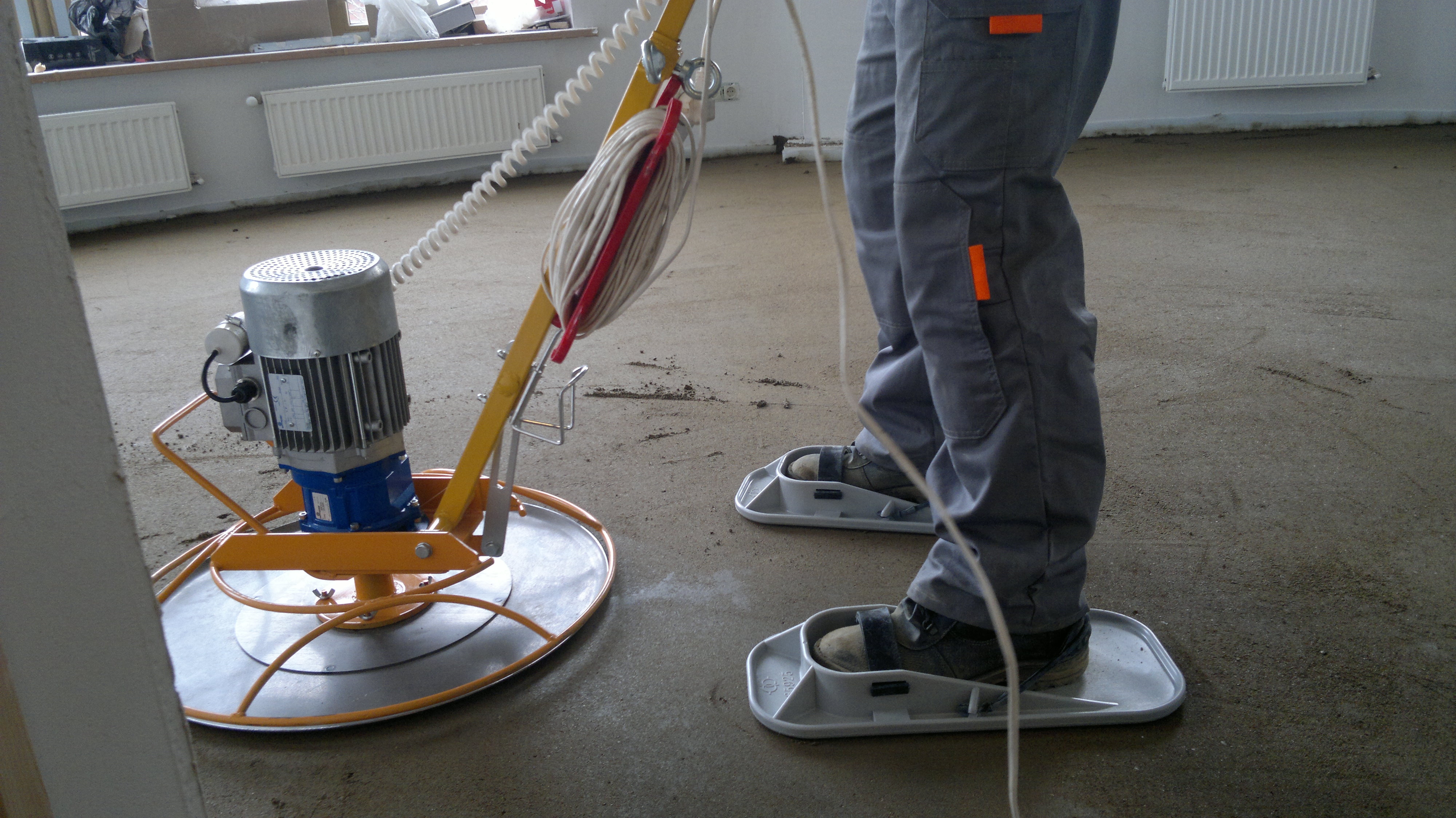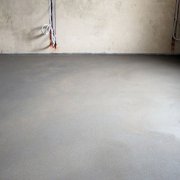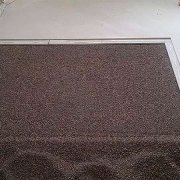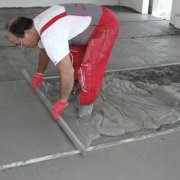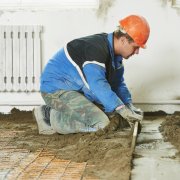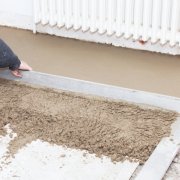Microfiber for floor screed: why?
Fiber or micro polypropylene fiber is a reinforcing material that is used in the reconstruction of surfaces using concrete. The product protects the solution from cracking, settling of cement and absorption of moisture. Fiber fiber also increases the operational period of concrete and improves frost resistance. Most often, the product is used in the arrangement floor screed. To make a reliable building foundation, it is recommended that you familiarize yourself with the rules of material selection and reinforcement screeds with fiber.
The content of the article
Fiber application
Polypropylene is used to make microfiber. This is a synthetic product in white. So that the material better adheres to the building base, the product is treated with a special substance. For the production of fiber, other materials are also used, depending on the type of product.
Fiber is used in the following situations:
- to form a screed for the floor from a cement-sand composition as a reinforcing base;
- for the manufacture of piles, canvases for the arrangement of roads and the foundation of buildings - the product is added to the solution, which is used in the production of these building products;
- mixed with plaster to increase the strength of the material;
- for the formation of structures made of cement-sand mortar, which are used in aggressive conditions, for example, for arranging a dam and other water barriers.
Microfiber Features
Product Features:
- Evenly disperses over the material after pouring the composition, filling all the voids, which prevents the formation of cracks and other defects on the surface of the screed even several hours after applying the composition.
- Prevents shrinkage of concrete during the hardening of the mortar.
- Increases the speed of solidification of the composition, while drying occurs evenly.
- Reduces the pores of concrete, thereby reducing the moisture absorption of the composition.
- It increases the ductility of concrete several times. This applies to the grout and base after solidification, which helps the screed to withstand increased stress and inhibit vibrations. This characteristic is significant for industrial and military facilities.
Advantages and disadvantages
Advantages of the material:
- increases the rate of solidification of the solution;
- improves adhesion of concrete and the building basis;
- increases the strength of the material;
- increases the operational period of the screed;
- increases the stability of the solution to temperature changes;
- reduces moisture absorption by cement;
- prevents cracking and delamination of the material;
- protects the base from mechanical damage;
- makes concrete resistant to abrasion;
- fiber is not susceptible to rust formation, unlike other reinforcing materials.
Professionals say that the material as such has no flaws. The main thing is to acquire a quality product from a popular manufacturer. In this case, when using the material, the wizard will have no problems. If you use fiber, the quality of which is doubtful, then during operation the composition will release harmful chemical compounds.
Characteristics
Fiber fiber has the following characteristics:
- length - up to 18 mm;
- diameter - 20 microns;
- resistance to tensile loads - 1700-2600 kg / cm2;
- specific gravity - less than 900 g / cm2;
- ignition temperature - more than 300 0WITH;
- elongation coefficient - 1.5-2.5.
Varieties
There are several types of fiber:
- A metallic variety of material. For the manufacture of such a product using steel. The tool is characterized by increased strength and durability. Frost resistance and resistance to sharp temperature fluctuations are also distinguished from the characteristics. Metal fiber is mainly used in industrial and military enterprises. Material is rarely used in arranging screeds for private housing or apartments, since the product does not have moisture resistance and has an impressive weight.
- Basalt fiber. The advantages of this product are fire resistance, frost resistance, resistance to temperature fluctuations, resistance to rust, moisture resistance and increased strength, which protects concrete from mechanical influences. Even if cracks appear on the building base, basalt fiber will preserve the integrity of the structure, preventing the base from breaking apart into separate pieces. Such material is used in regions with high seismic activity, as well as in rooms with high humidity.
- Polypropylene product. The main advantages of the material are its low weight, resistance to the harmful effects of aggressive substances and reasonable cost. The tool does not conduct electricity, so the product is often used for screeding underfloor heating. Polypropylene screed is most often used in houses, cottages and apartments.
- Fiberglass material. This product is used for complex concrete structures, as well as for cladding buildings.
- Asbestos thread. Such material is only suitable for facade cladding.
How to choose?
When choosing fiber, the following points are taken into account:
- dimensions of the room;
- type of construction;
- purpose of the premises: industrial, military or household facility;
- roughing height;
- load on the construction base;
- operating conditions of the material;
- the availability of all relevant quality certificates and other similar documentation;
- factory production;
- manufacturer - it is important to choose only popular brands that value their reputation and guarantee product quality.
Typically, fiber is chosen as follows:
- To equip the rough coating in private houses, cottages and apartments using polypropylene fiber. This is the lightest material, it will not weight the screed, therefore, it will not create additional load on the structure. The product is also valued for its low electrical conductivity, which is important when installing underfloor heating.
- For objects that are subject to increased mechanical stress, for rooms with heavy equipment on the floor, for steel structures, steel fiber is suitable.
- To make fences for garden and other similar sites, sculptures, arches, as well as to finish the facade, it is recommended to use fiberglass. This material has elasticity, which allows you to create complex structures.
Another important criterion when choosing a fiber is the length of the material:
- up to 6 mm - this material is suitable for decorating the facade of the building and brickwork;
- up to 12 mm - for monolithic structures;
- up to 18 mm - for structures used in aggressive conditions;
- from 18 mm - for arranging a rough floor covering.
What is a fiber screed?
Screed - a multilayer rough coating, which is laid on a building base or waterproofing material. The main purpose of arranging this floor element is to level the building foundation. For screeding with fiber, cement mortar is predominantly used.However, using this material to achieve a flat surface is problematic even for an experienced craftsman. In addition, this product absorbs moisture over time, which adversely affects its strength, and is destroyed due to constant load and mechanical stress.
To increase the strength of the solution and facilitate the application and leveling of the material, reinforcement of the building base is performed. Most often, a metal grill is used for this. However, the use of such material is relevant only in rooms with a small area.
In rooms with impressive dimensions, an iron grate will not facilitate the application and alignment of the solution. For this reason, fiber is used instead of this material. Such a product is not laid in a separate layer, but combined with cement. After this, all components and water are added and the solution is kneaded.
To prepare the product, professionals recommend using a concrete mixer or industrial mixer. Such tools will help to make a homogeneous solution of the required consistency. The finished composition is distributed on the surface. This will be the floor screed with fiber. The fiber provides uniform solidification of the coating and prevents the formation of air bubbles.
Fiber Consumption
There are several ways to prepare cement with fiber. Means differ from each other in the amount of polypropylene in the composition. The quality of the solution is determined in this case by the amount of not fiber, but fiber. Recommended material consumption:
- to increase the plasticity of the solution and the filling of the product with voids, it is recommended to add 300 g of fiber to the material;
- to increase resistance to stress and mechanical stress of the material, 500-600 g of fiber is added to the cement;
- 800 g of fiber is added to the product to create the best quality solution.
This amount is taken to prepare the solution for 1 m3 of screed.
Technology for the implementation of reinforcement screeds with fiber
To make a fiber-optic screed, you will need tools:
- beacons made of aluminum;
- level;
- rule
- roulette;
- spatula and trowel;
- industrial mixer, concrete mixer or drill with mixer nozzle;
- self-tapping screws;
- capacity for solution.
Before arranging the rough coating, the construction base is prepared:
- Dismantle the old coating.
- Dust off the surface.
- Remove metal parts or coat elements with an anti-corrosion agent.
- They increase the size of defects, primer cracks and potholes and fill them with cement mortar.
- The floor is washed and left to dry.
- Apply a primer for the final binding of fine particles of dust and dirt.
- Set the level and calculate the height of the screed, and then make the appropriate marks.
- Install beacons parallel to each other at a distance less than the length of the rule.
After this, a solution is prepared. First, sand and cement are combined, then half of the amount of fiber required for the screed is added to these components. The materials are stirred and water added. Then the remaining fiber is gradually introduced and the solution is kneaded.
After that they act like this:
- They cover the construction base with a thermal insulation coating.
- In the corner opposite the door, pour the solution onto one “path” of the beacons and level it out using the rule.
- Manipulation is repeated on other parts of the surface.
- After solidification, the material is treated with a grinding machine to smooth the surface and mask possible defects.
Product curing occurs 12 hours after pouring the mortar, however, you can lay the flooring after 4 days. During this time, the material will gain the necessary strength.
The video in this article demonstrates how to properly make fiber-optic screed.
Fiber-optic screed is an element of the floor structure that prepares the construction base for laying the finish coating. If you choose and use the material correctly, the screed will last for a long period without causing any harm to the occupants of the room.
